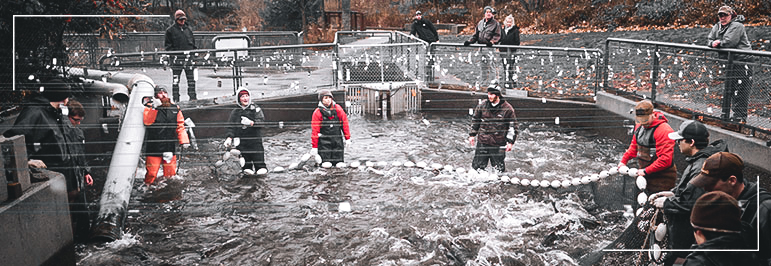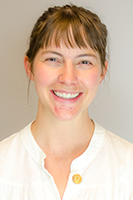Aquatic Science

Fundamentals of Aquatic Sciences - Certificate
Have you always enjoyed being outdoors but couldn’t fully picture it as a career? Have you always wanted to learn more about the ocean environment that makes our region so special? Did you grow up near the water but are unsure of the next steps to move into a shore-based profession? If any of this sounds familiar, then the Fundamentals of Aquatic Science Certificate is the right path for you to explore exciting career options.
In a short three quarters, you will maximize learning and minimize time commitment to determine if the aquatic world is the best fit for you. This certificate combines all the entry-level courses offered in the Fisheries and Aquaculture Sciences program to provide students with a broad and comprehensive introduction to aquatic science. Students will learn the fundamentals with courses focusing on biology, ecology, and oceanography while also gaining experience in field sampling, hatchery operations, and lab explorations.
If a student decides to continue their education at BTC, then the completion of this certificate can be applied to any of the program’s AAS or AAS-T degrees. Students desiring a different pathway can transfer up to 46 credits to a partnering institution.
Ready to explore your career options on the water? Start your entry-level certificate and get ready to dive in!
Included in the AAS and AAS-T degrees.
Employment Information
Data are provided on a program (not credential) level
71% BTC graduate placement rate1
$49,303 starting annual wage2
$56,597 average annual wage2
$66,348 potential annual wage2
Entry Information
When Can I Start?
This program typically starts in Fall, Winter and Spring quarters.
What are the Minimum Entry Requirements?
A completed college admissions application and placement in English and Math. BTC uses a Guided Self-Placement process to help you choose the best starting point for your English and Math courses. Your selections will determine whether you begin with program coursework or complete prerequisites classes first.
To get started or for help determining your English and math placement, contact the Outreach department at Outreach@btc.edu
What are My Next Steps?
Classes
Total Program Credits: 46
General Education Core Courses
AMATH 111 Applied Technical Math 5 CR OR Higher AENGL 100 Applied English 5 CR OR ENGL& 101 English Composition I 5 CR OR Higher TOTAL General Education Core Course Credits 10 CR Core Courses for Program
AQUA 101 Introduction to Applied Sciences 2 CR AQUA 111 Applied Techniques: Fall 3 CR AQUA 112 Applied Techniques: Winter 1 CR AQUA 113 Applied Techniques: Spring 2 CR AQUA 121 Principles of Aquaculture 5 CR AQUA 122 Principles of Fisheries Science 5 CR AQUA 131 Aquatic Chemistry with Lab 5 CR AQUA 141 Research Methods 3 CR ENVS& 101 Fundamentals of Environmental Science 5 CR OCEA& 101 Introduction to Oceanography with Lab 5 CR TOTAL Core Courses for Program Credits 36 CR
Program Outcomes
After successfully completing the certificate, students will be able to:
- Summarize the fundamental theories of aquatic science, as related to biology, chemistry, ecology, and environmental science.
- Identify the principles and best practices of the fisheries and aquaculture industries.
- Demonstrate industry-level competencies in field, lab, and hatchery techniques.
- Conduct workplace operations in a safe and professional manner with an emphasis on teamwork skills.
Employment Outlook
Faculty & Support

Brittany Palm
Fisheries & Aquaculture Sciences
Sara Smith
Fisheries & Aquaculture Sciences
Kai Rick
Hatchery Operations Specialist
Steeve Pomerleau
Fisheries & Aquaculture
Kai Rick
Hatchery Operations Specialist
Steeve Pomerleau
Fisheries & AquacultureContacts
If you have questions about this program or want help with the admissions steps to Bellingham Technical College, please email outreach@btc.edu.
Current students wanting academic planning and support, can connect with the program Instructor(s) or email FisheriesNav@btc.edu
